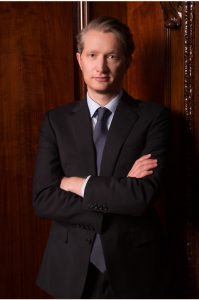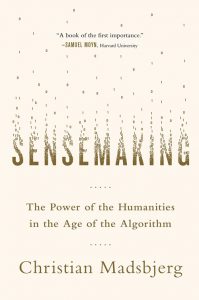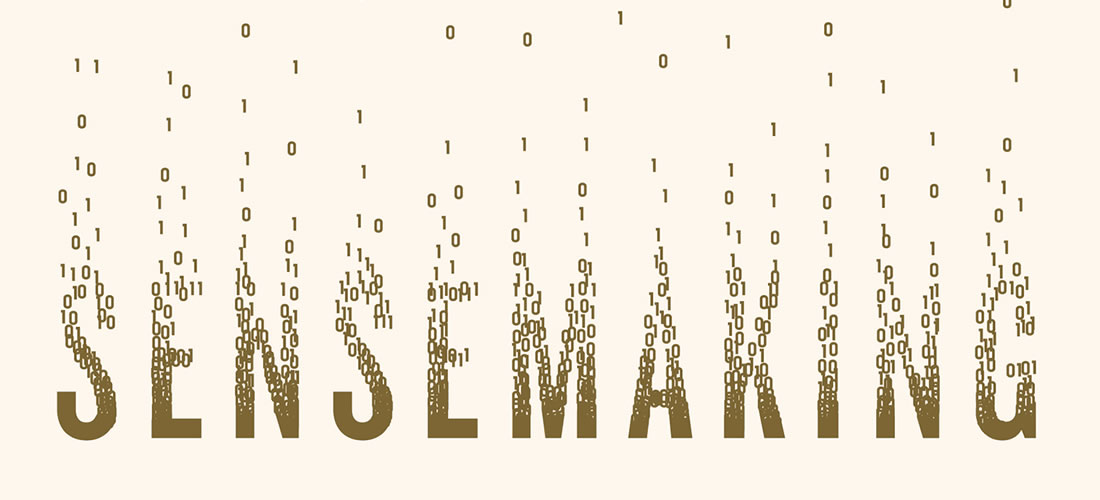 This month we are sharing an excerpt from the new book, Sensemaking: The Power of the Humanities in the Age of the Algorithm. Based on his work at some of the world’s largest companies, including Ford, Adidas, and Chanel, author Christian Madsbjerg shares his thoughts on how big data can’t be the only information to inform our decisions. He gives examples of how many of today’s biggest success stories stem from more than just data, but nuanced engagement with culture, language, and history. He calls his method sensemaking.
This month we are sharing an excerpt from the new book, Sensemaking: The Power of the Humanities in the Age of the Algorithm. Based on his work at some of the world’s largest companies, including Ford, Adidas, and Chanel, author Christian Madsbjerg shares his thoughts on how big data can’t be the only information to inform our decisions. He gives examples of how many of today’s biggest success stories stem from more than just data, but nuanced engagement with culture, language, and history. He calls his method sensemaking.
Sound intriguing? Read on!
We seem to live in an era of unprecedented complexity. Our world tells us that the pace of the seismic change occurring around us has rendered us incapable of seeing the big picture. Whether we are in the TV industry, attempting to navigate the emergence of streaming content providers like Amazon, Hulu, and Netflix, or medical practitioners barraged by an unending stream of often contradictory health studies, it is easy to accept these claims of overwhelming complexity. We want to throw up our hands and turn to the machines all around us: surely big data and algorithmic programming can make some sense of all of this. We, as humans, no longer can.
Allow me to surprise you: I believe that our world is actually no more complex than it has ever been, nor is it more incomprehensible. Yes, we have the Internet and the proliferation of wearable computing, but my grandmother experienced the destruction of two world wars, the discovery of penicillin, and the inventions of mass production, investment banking, and space travel. She lived through the agricultural revolution, witnessing mass starvation followed by a food system that now produces more than enough for everyone (when distributed intelligently). These are only a few of the innovations that utterly transformed her world during her time. Yes, we are living through change. Is it seismic? My grandmother would say, “Not really.”
Today’s world feels overwhelmingly complex because we are obsessed with organizing it as an assembly of facts. Big data makes us feel as though we can and should know everything there is to know on earth. But this is a fool’s quest, and it leaves everyone involved feeling depleted and lost. We are so fixated on staring at the oracle of the GPS that we have lost all sensitivity to the stars shining right above our heads. The tools of navigation have always been available to all of us. But we must take responsibility for interpreting them. This means executives need to be prepared to understand new and unfamiliar contexts—political, technological, cultural—and to interpret their place in our increasingly interdependent world.

This rigorous cultural engagement is the foundation of the practice I call sensemaking. Academics have used the term sensemaking to describe different concepts over the years, but I use it here simply to describe an ancient practice of cultural inquiry, a process based on a set of values we are in great danger of forgetting. With sensemaking, we use human intelligence to develop a sensitivity toward meaningful differences—what matters to other people as well as to ourselves.
Sensemaking is a method of practical wisdom grounded in the humanities. We can think of sensemaking as the exact opposite of algorithmic thinking; it is entirely situation in the concrete, while algorithmic thinking exists in a no-man’s-land of information stripped of its specificity. Algorithmic thinking can go wide—processing trillions of tetrabytes of data per second—but only sensemaking can deep.
Therein lies sensemaking’s greatest offering: it teaches us two essential things about leadership in an era of big data. To begin with, sensemaking can guide us in selecting an appropriate context for data collection. After all, the mere task of collecting data is meaningless in the abstract. What data do we collect? What for? How? It is impossible to study the world without some sort of paradigm for thinking about what you want to study.
 Secondly, sensemaking shows us how to cultivate a perspective on how data fits together as an expressive portrait. Leaders must find a team who can use data to piece together a richly textured view of the world, in which resulting interpretations can add up to something greater than the data collected.
Secondly, sensemaking shows us how to cultivate a perspective on how data fits together as an expressive portrait. Leaders must find a team who can use data to piece together a richly textured view of the world, in which resulting interpretations can add up to something greater than the data collected.
In this way, sensemaking teaches us where to put our attention. We don’t try to know everything; we work to make sense of something. In the midst of complexity, a sensemaking practice allows us to determine what actually matters.
The business of food products, for example, is not just about market entry plans, capital investment, and product positioning. It is about understanding how we, as a culture, sit in relationship to food. How we consume it; how we share it; what it means to us. Strategy is about finance but also about culture, people, emotions, behavior, and needs.
Instead of attempting to reduce the complexity of all of these layers of humanity—like a journey determined by the reductions of a GPS—the sensemaking practice follows the North Star. We learn to navigate through the rich reality of our world, developing a finely honed perspective on where we are and where we are headed. If algorithmic thinking offers us the illusion of objectivity—or a view from nowhere—then sensemaking allows us determine where we are. And, most important, sensemaking puts us in touch with where we are headed.






